Telehealth Links Rural Hospitals to ICU
Northland DHB has developed a new mobile Telehealth Cart and linked all of its Rural Hospitals (Kaitaia, Bay of Islands, Dargaville and in 2020 Rawene) to the Intensive Care Unit at Whangarei Hospital.
The Northland Telehealth and Mobility team developed this cart in conjunction with Northland DHB Intensive Care Physicians, Connect NZ, healthAlliance and the University of Queensland Centre for Online Health.
The carts allow remote patient assessment and management in the acute clinical setting, enhance assistance and decision making for acute retrieval requests from rural Hospitals, and provide Whangarei Hospital with an after-hours telestroke service.
The acute retrieval service is called RITA or ‘Rapid Information Telehealth Assessment’, and uses Zoom videoconferencing from a computer workstation, tablet or cell phone enabling a much broader and more integrated communication network than previously.
The mobile carts are moved to the patient’s bedside and from there all other functionality is controlled at the ICU end, enabling Rural Hospital teams to be hands off with the technology and concentrate on their patient. The ICU end can control the call and functions of the two cameras. The second camera has a powerful zoom, which is also remotely controlled.
RITA enhances Whangarei-ICU’s remote acute assessment capabilities to Rural Hospital Emergency Departments and wards, patient safety through direct rapid patient assessment, as well as advising on patient management of the acutely unwell patient. This includes assisting with decision-making in determining the safest way to transport the patient.
The carts create a truly integrated acute clinical telehealth network. The remote access capability allows for multiple clinicians in different locations to assess patients together in a multidisciplinary approach.
Whangarei ICU triaged 532 retrieval requests in 2018 of which 226 were allocated as Category 1 and 306 as category 2. Category 1 flights are crewed by an ICU doctor, an ICU retrieval nurse and a paramedic while category 2 flights are crewed by a paramedic only.
The forerunner to RITA was installed in Kaitaia Hospitals Accident & Medical Department in 2013. Named NEMO (Neo-Natal Examination Management Online) it was a research collaboration with the University of Queensland, and that experience in Northland was a significant contributor for the design and capability of the new carts, as well as how they were introduced and are now used.
Our evaluation data shows that:
- 72 percent of clinicians recorded that using the device added to the advice that they were able to provide
- 32 percent of cases showed change in acute management
- Changes in transfer category occurred in 16 percent of cases.
- Overall this Telehealth cart system leads to an increase in:
- patient safety
- support to Senior Medical Officer’s (SMO) in the rural Hospitals
- support to Northland’s Flight team and registrars once onsite, and
- adequate resource allocation and a reduction in unnecessary flights.
Case Studies
The following are two typical examples of how RITA improves patient management.
In July 2018 an unwell one-year-old patient in severe respiratory distress (Status 1) was taken to Bay of Islands Hospital by ambulance from Kaikohe with an attending GP. The patient was assessed via telehealth by the Whangarei Hospital Intensive Care Unit, paediatrician and Clinical Flight teams for a possible helicopter transfer.
The patient was able to be stabilised with the help of the specialist teams, and the real-time coordination across the clinical teams made possible by the use of telehealth contributed to the young patient having a successful outcome. This also meant that the team were able to stand down the helicopter transfer, saving costs and keeping it available for other potential calls.
In June 2019 a renal patient in Kaitaia required urgent management in Whangarei. However, due to poor weather the helicopter was unable to fly and the patient was not safe to transfer without a fully trained escort, intubation and sedation.
RITA was used by the ICU team and remote on call renal specialist linking in to the Kaitaia clinical team. Together they were able to understand, see and discuss the patient situation. The renal specialist reviewed laboratory results, and combined with the understanding of the situation adjusted treatment as a result. Active treatment for acute toxicity and confusion commenced without transfer delay. The patient was later flown to Whangarei for further treatment and has made a good recovery.
The introduction of the RITA network and NEMO prior to that has repeatedly shown that telehealth eases the communication between different health care providers and improves the care for the acutely ill patients. In situations like this the gap between the rural hospitals and the referral centre can be closed.
Photo:
Whangarei ICU’s Dr Michael Kalkoff discusses a recent case with Kaitaia Hospital Senior Medical Officer Damian Marsh and Registered Nurse John Walker via RITA
Last modified:
